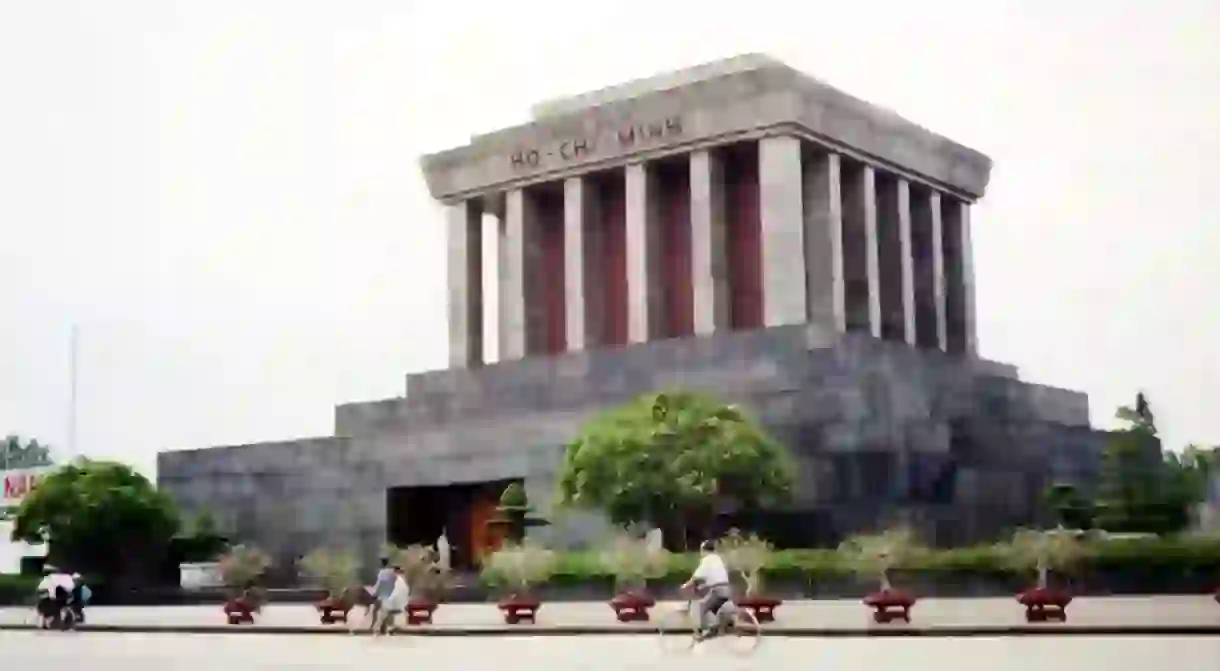Who Was Vietnam's Ho Chi Minh?

In Vietnam, Hồ Chí Minh’s face is never too far away. He’s Uncle Ho, a cult-of-personality figure akin to Mao, elevated by the state as an image of national identity—a saint to some, and a villain to others. Yet for many young tourists arriving in Vietnam these days, Hồ Chí Minh is a mysterious figure. Here’s his story.

Born in 1890, Hồ Chí Minh lived a privileged childhood. His father was a Confucian scholar, teacher, and later an imperial magistrate. While attending Collège Quốc Học in Hue, the young Hồ Chí Minh—then known as Nguyễn Tất Thành—chose to leave school and travel. He sailed out of Saigon on a French steamer headed for Marseilles, working in the kitchen.
From 1911 until 1919, Hồ Chí Minh traveled between France, America, and England, working a series of menial jobs in places like Brooklyn, Boston, and West Ealing. It wasn’t until he arrived back in France in 1919 that he became politically active, joining other Vietnamese Nationalists demanding a seat for Vietnam at the Versailles peace talks following the end of World War I. Though they were ignored, their efforts brought them to the attention of anti-colonialists in their homeland.
In Paris, Nguyễn Ái Quốc—as he was then known—gave speeches in favor of Bolshevism in Asia. He was also a founding member of the Parti Communiste Franglais, where he tried unsuccessfully to draw attention to colonial rule in Vietnam. After 1923, he traveled to Moscow, China, Paris, Bangkok, India, and then back to China, working for Communist International. During this time, he also helped unify two competing factions into the Communist Party of Vietnam.
Hồ Chí Minh returned to Vietnam in 1941. He worked closely with America’s Office of Strategic Services and the Việt Minh to undermine both the Vichy French and the Japanese occupiers. After the August Revolution, Hồ Chí Minh issued the famous Proclamation of Independence, forming the Democratic Republic of Vietnam. From then on, Hồ Chí Minh consolidated power, eliminating rivals, and even convincing the emperor to abdicate. When Vietnam was overrun by Chiang Kai-shek’s Chinese army following the end of World War II, Hồ Chí Minh was forced to sign an agreement with the French, making Vietnam an autonomous country under the French Union. But this agreement soon crumbled, and in 1946, Hồ Chí Minh’s government declared war on the French. It took until 1954, after Mao had backed the National Vietnamese Army with both munitions and troops, to oust the French, beating them in the pivotal battle at Điện Biên Phủ.

The Geneva Accords separated Vietnam into two countries: Việt Minh forces in the North, and anti-communists in the South. While each side undertook violent purges within their new countries, North Vietnam also increased support for the National Liberation Front guerilla fighters operating in the South, otherwise known as the Viet Cong.
Around 1959, Hồ Chí Minh’s actual power began to diminish. He was replaced by Lê Duẩn, who stepped up support for Viet Cong forces by invading Laos and building the Hồ Chí Minh Trail to transport supplies into the South. As the conflict escalated, drawing in American Marines in 1965, Hồ Chí Minh became more of a figurehead in the North, often meeting with peasants and workers.
When the war stagnated in 1967, Hồ Chí Minh gave his approval for the Tet Offensive. The simultaneous attacks sent shock waves through America, undermining the already flagging support for the war in that country. Afterwards, Hồ Chí Minh and the leadership in the North simply extended the war until America was forced to agree to Hanoi‘s terms. However, while negotiations were still ongoing, Hồ Chí Minh died of complications from diabetes and other ailments.

In the last years of his life, Hồ Chí Minh became more of a symbolic leader—the face of national independence. Following the war, Saigon was renamed after him, and the government used his image to develop a personality cult and give a look of humanity to their bureaucracies. To many Vietnamese, he is a patriarch in their family—their revered Uncle Ho. He was a poet, polyglot, gardener, traveler, Vietnamese nationalist, communist, and now he’s the face of the Socialist Republic of Vietnam. For many, especially Vietnamese living abroad, he is a contentious figure, and time has done little to heal their wounds. But his story is intricately woven into the story of modern Vietnam, and to the winners go the spoils.














